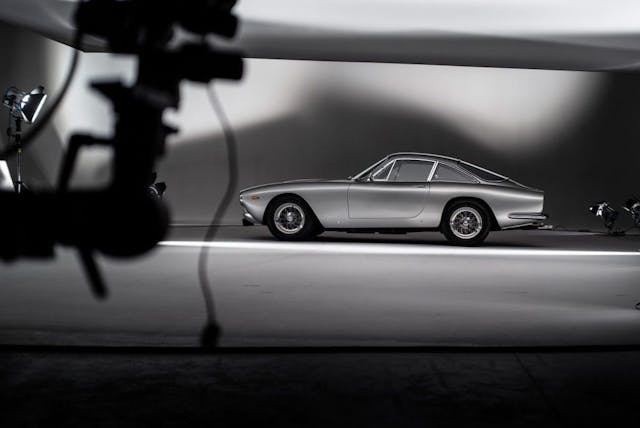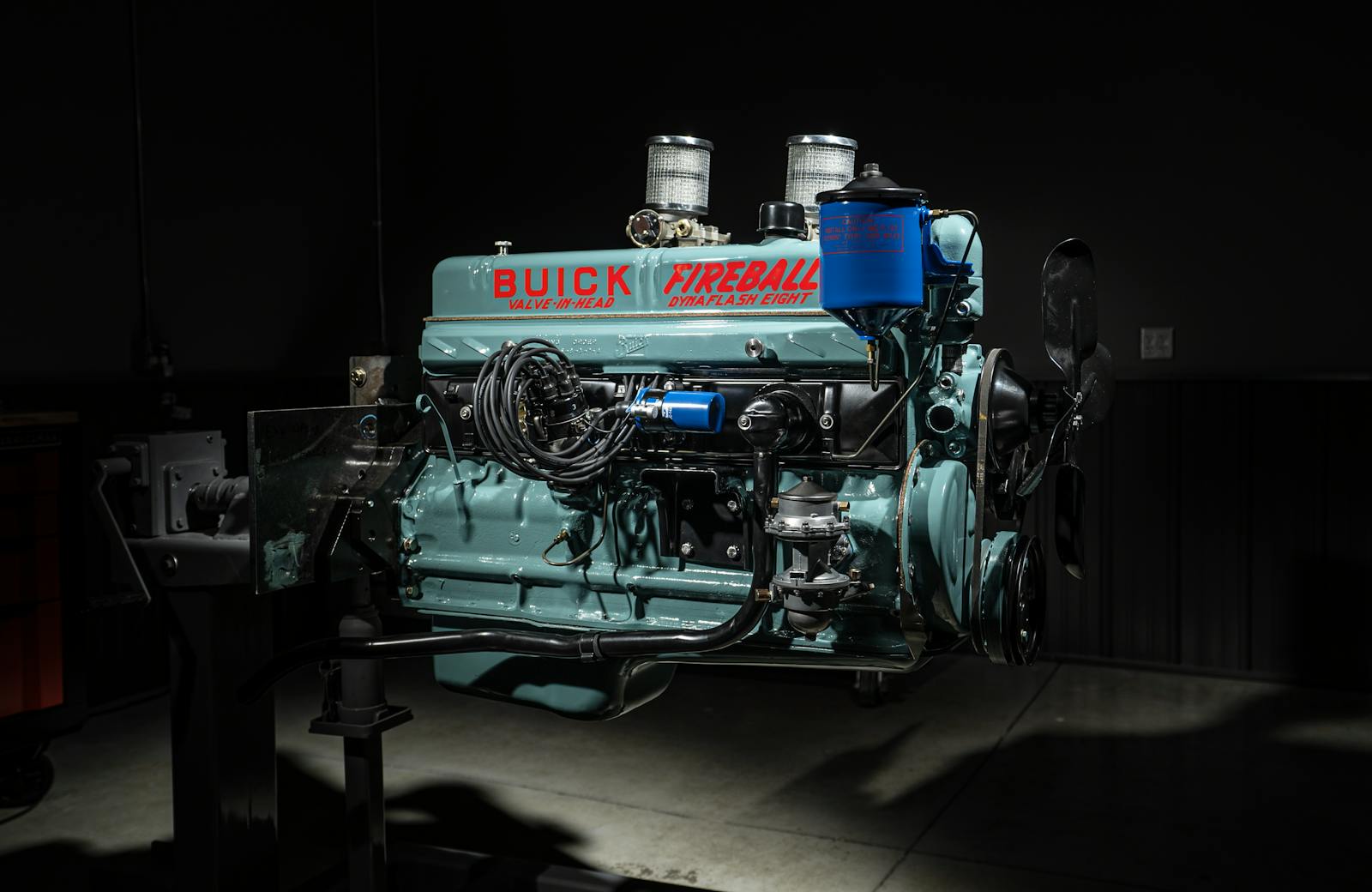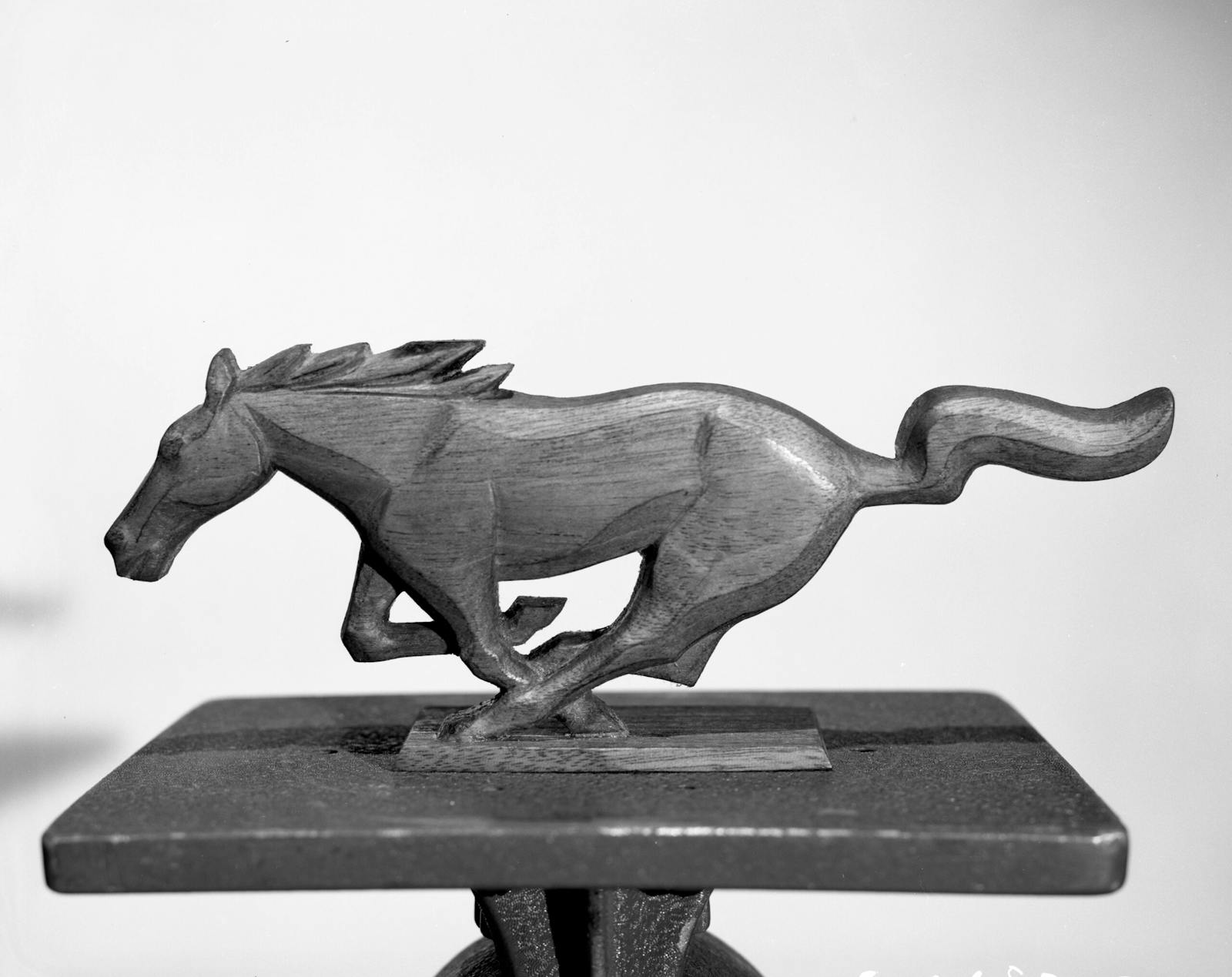The 15 most important Ferraris, as per 5 Maranello experts
On Christmas Day, 2023, Enzo Ferrari will grace the silver screen in a new biopic, titled Ferrari. The film recounts Enzo’s risky bet on the 1957 Mille Miglia, the 1000-mile sports-car race whose outcome could determine the fate of his namesake company. In anticipation of the big debut, which will feature Adam Driver, Penelope Cruz, and Patrick Dempsey (read our exclusive interview with the actor here) we’re resurfacing this October 2022 article that highlights some of the Italian marque’s most important cars. —Ed.
Picking the most … anything out of an illustrious chronicle such as Ferrari’s is a torturous exercise. Over its 75 years as a racing scuderia and artisanal automaker, Ferrari has produced more gorgeous bodies, more sonorous engines, and more motorsports glory—often with all three occurring at once—than any single enterprise in the history of the automobile.
So we did what any group of rank cowards would do and punted, offloading the task to a diverse mix of aficionados, insiders, and collectors from Ferrari’s vast orbit. We asked them a simple but deliberately vague question: Name your three most significant Ferraris, and we let them interpret the word “significant” as they saw fit. Here is what they punted back.
Frank Stephenson
Frank Stephenson is a car designer of both American and Spanish lineage, born and raised in Casablanca, Morocco. Over his 30-year career, he has served as design director for Ferrari, its sister brand Maserati, and McLaren. Among his most recognizable works are the 2001–2006 reboot of the Mini Cooper and the Ferrari F430. He now runs his own London-based design firm, Frank Stephenson Design.

1. 1962 250 GT Berlinetta Lusso: “This was the first Ferrari road car that transferred race car design technology to a production vehicle by incorporating a rear spoiler known as a duck tail. It had a very pure, uncomplicated, and flowing shape as well as elegantly narrow pillars.”
2. 1973 365 GT4 BB: “This car replaced the popular front-engine Daytona and marked a turning point for Ferrari, being its first mid-engine 12-cylinder design. Also, it incorporated pop-up headlights, which allowed for a very sleek and clean front-end profile.”
3. 1969 Dino 246 GT: “This car was badged a Dino, but it should be viewed as a Ferrari. It is incredibly well proportioned, with beautiful surface transitions. It has a love-at-first-sight aura and not a single unagreeable viewing angle. Those negatively curved rear buttresses and curved rear glass are masterfully executed. For me, it’s a totally lustful object of design.”

Mike Sheehan
Mike Sheehan is a Canadian who hitchhiked to California, and in 1972, he focused on buying and selling Ferraris. He has also vintage-raced many significant competition Ferraris, and 50 years and a few thousand Ferraris later, he and his daughter are still at it (see: Ferraris-online.com). Sheehan calls himself a survivor for having weathered seven or eight (depending, he says, on how you count them) boom-and-bust Ferrari cycles.

1. 1969 512 S: “This sports-racing car is an unassailable choice. I bought and raced one, serial number 1018. The 5.0-liter V-12 had an awesome power curve and a sound to die for. The first time I drove it, I made the mistake of not wearing earplugs and my ears were ringing for hours. On the track, the 512 had a wonderful balance. I sold that car in 1991 when the Ferrari market was falling off a cliff. Today it’s worth $8 million to $10 million. Sigh.”
2. 1957 250 Testa Rossa: “The TRs were raced by the factory and also sold to gentleman racers. They won all the major sports car races of the era and established Ferrari’s reputation for building fast, tough, and easy-to-drive competition machines. I’m particular to one example, serial number 0732 TR, which I drove in the 1988 Mille Miglia, a 1000-mile annual road rally that mimics the original open-road speed contest. I couldn’t help but slide and drift it through every town square, which the Italian spectators absolutely loved. That was a life-changing experience.”
3. 1969 365 GTB/4 Daytona: “This was the last V-12 Ferrari designed before Fiat bought 50 percent of the company and before regulations had a strong influence on car design. The Daytona was stunningly beautiful in 1969 and remains so today. It was a true supercar in its day; Brock Yates and Dan Gurney used one to set the 1971 Cannonball Run record. The pair risked driving this high-profile car because it was so capable and a true 170-mph automobile in a time when 150 mph was considered very fast.”

Paul Russell
Paul Russell founded the restoration shop Gullwing Service Company in 1978, which evolved into Paul Russell and Company in 1988. Russell- restored cars have won 49 Best of Show awards and three “Best of the Best” awards at various concours. He is a chief class judge at Pebble Beach, at the Cavallino Classic, and at The Amelia.

1. 1949 166 Barchetta: “This car put Ferrari on the international map after Luigi Chinetti persuaded Enzo—who was nervous about the car’s reliability—to enter it in the 24 Hours of Le Mans. Chinetti drove for 23 of 24 hours and won. The design was groundbreaking, a major shift from the cycle and pontoon fenders of contemporary sports cars. The 166 also had the first V-12 designed by Gioacchino Colombo. Versions of that mill powered Ferraris for years. Today, the 166 is an antique car with a transverse front leaf spring, but it’s an incredibly charismatic machine. If you leave the pilot’s seat with anything but a huge grin, you’re brain-dead.”
2. 1962 250 GTO: “Enzo was all about racing, and the GTO delivered three World Sportscar Championships. It’s the iconic Ferrari design, masculine and sexy. Everyone recognizes it. GTOs are mechanically basic, but they were incredibly durable thanks in part to the evolved Colombo V-12. The GTO was the last of a romantic era, when racing cars could also double as street cars. Maybe that’s why of all the vintage Ferraris, the GTO is worth the most, with a recent private sale at $80 million.”
3. 1975 312 T: “Ferrari today would be very different without the 312 T. After years of poor results in F1, the 312 T won four constructors’ championships. The team was then run by a young Luca di Montezemolo, who later became Ferrari’s president after Enzo’s death. Ferrari was a chaotic mess then, with several mediocre and poorly built models. Without the stature earned by Montezemolo’s F1 success, I’m not sure he could have righted the ship. Without the 312 T, there’s no Michael Schumacher or La Ferrari.”

Cathy Roush
Cathy Roush is the daughter of Ferrari Market Letter founder Gerald Roush. She has worked at FML in some capacity since its inception and took over publishing duties after her father passed in 2010. Now in its 47th year of biweekly publication, and with a companion website, FML offers Ferrari classified ads and has a historical database on over 100,000 Ferraris.

1. 1948 166 MM Barchetta: “The 166 is the car that put Ferrari on the map. I was a teenager and with my dad when he found one in a barn in Texas. I’ve loved that car ever since, and since there can only be one first, the 166 is the Ferrari.”
2. 1954 250 GT Coupe: “This was nearly a mass-produced car for Ferrari in the 1950s, as Ferrari produced around 350 examples over four years. The 250 GT was a comfortable street car and much more civilized than the competition machines. The sheer volume of 250 GTs produced meant that it transformed the image of Ferrari beyond just racing and into touring cars.”
3. 1969 365 GTS/4 Spyder: “If I win the lottery, this is the first car I will buy. They’re just gorgeous, with wonderful V-12 engines. I have loved this model since the mid-1970s when I first saw a white one in front of an antebellum home in Athens, Georgia. I think my opinion here is colored because my dad and Pat Braden wrote what many consider the bible for Daytonas.”

Luigi Chinetti Jr.
Luigi Chinetti Jr. got both his name and trade from his father, who was uniquely responsible for bringing Ferrari to the U.S., where the rich market proved a critical funding source for Enzo’s firm. Like his dad, Chinetti Jr. also raced at Le Mans. In 1971, his first participation, he finished fifth overall and first in class, driving a 365GTB/4 Daytona, just behind the big Porsches and Ferraris. It was entered by the family’s North American Racing Team, which was created in the 1950s to promote Ferrari. They had the first Ferrari to win Le Mans, in 1949, and the last, in 1965.

1. 1960 400 Superamerica: “Ferraris have to be beautiful, and the 400 SA is one of the most beautiful street cars they ever made. The entire design just works, and the proportions are particularly wonderful.”
2. 1987 F40: “The F40 has everything. It’s a true driver’s car in that you have to use your head to pilot it and it has a manual transmission, something absent in today’s cars. I find today’s supercars, with horsepower reaching 1000, overkill. What can you do with that? The F40 was brutally quick yet somehow usable. I had one new and I loved it.”
3. 1964 250 LM: “I drove one from New York to Chicago during a snowstorm. I raced one at Daytona. That car is seared into my brain. It did everything expertly. If they had made it a little more comfortable for the street, it would have been a commercial success; no other rear-engined Italian offerings would have been able to match its credentials.”

Check out the Hagerty Media homepage so you don’t miss a single story, or better yet, bookmark it.



Two Pick three cars from the Ferrari Portfolio is most difficult.
#1 the F40 is no doubt the best envisioned model Enzo ever produced. It is a shame it never was races like it was originally intended. I did see one race in IMSA in the GTO class running the field of tube chassis cars while the F40 only had better cams, larger turbos, a F1 dash and still had opening doors. Here the car also shared much with the 288 GTO.
#2 For Styling the 250 Lusso was the best styled car at Ferrari and maybe in the industry. Yet the bones under the car were based on the GTO 250.
#3 The 250 TR Roadster had the grace and styling yet proved to be one of the winningest Sports Cars in Racing. This car set the path for Ferrari in the 60s in racing and on the street. It is where Ferrari went from the odd race car builder to a true leader in racing and performance.
While I appreciate the new cars I resist choosing them as they are more electronic control vs the cars that do it all mechanically. The older cars were also hand built and are like true items of Mechanical Art.
Enzo Ferrari was an expert in brand management while employing engineers to design and build engines, suspensions and gear boxes.
Pinninfarina designed & coach built most the legendary cars for Ferrari so they were the creators of the vehicles that Ferrari attached his name to.
Most other legendary brands were named after the designers and coach builders irrespective of who supplied the engine or running gear.
Surprised by a few omissions here:
1) 1976-1984 308 GTB/S: Arguably the most recognizable Ferrari on the planet. Ferrari’s first truly mass-produced model (if any Ferrari can be called that) carried-forward the design language first seen on 1965’s 206 Speciale, cemented the brand as world-wide icon, and provided the base for Ferrari’s first Super Car, the….
1984 GTO: As beautiful as the F40 is brutal, it and Porsche’s 959 ushered-in the age of the Super Car.
1994 333 SP: Ferrari’s first purpose-built sports-racing prototype in more than 20 years, the 333 SP used a proper V-12 based on Ferrari’s current F1 engine. Enlarged to 4.0 liters, the engine revved-out to a spine-tingling 11,000 rpm. The 333 returned Ferrari to the top rung of international sports car racing and relaunched the factory’s involvement in Motorsports beyond just F1.
Yes, gotta have 308, in part due to Magnum PI! 3 impossible to pick and even 15 tough. And new versus old…old important aa without some of those early models there would be no Ferrari today. And it would be tough for me as I am not as familiar with those models as newer models. But would definitely have the 308, 512BB, F40, and 246 in my list, but what next??? And could racing only cars like F1 be included???
It drives me crazy when car magazines have articles about beautiful or important cars and then don’t show pictures of them. You had 15 cars selected and pictures of 6. I love Ferrari’s, but can’t necessarily remember what each one looked like.
Question for the authors and community at large. Can you recommend a definitive written history of Ferrari and its cars on par with Karl Ludvigsen’s “Porsche: Excellence Was Expected”?
It depends upon what portion of Ferrari story you want to get more in depth on. Luca Dal Monte’s book is great about Enzo Ferrari from his early days (pre-Ferrari the manufacturer) through to the end of his life. The Fitzgerals and Merritt book might be a good one covering more of the Ferrari cars. One can have shelves of books covering the man, stories from those inside, individual models, the evolution of the factory, the F1 cars, road cars, the GT cars, the prototypes. One can also look at 2 US magazines that are devoted solely to Ferrari.
Thanks for the tip! I’ll check them both out!
As the article states, there is no way to pick just 15. That statement stands as a tribute to what Ferrari has done over the years. Can we add the 60s 250GT Californias, the Testarossa, and the Enzo? If we expand the list to 25, we can do more justice. 🙂
I as well am surprised that the Pininfarina 308 series of cars was omitted by every “EXPERT” in your article.
F40 for me is my favorite but without the 288 GTO there is no F40.
Most important is an interesting criteria. Most important in what way?
The 166MM is worthy because it won at LeMans (as an international showcase) in 1949 when Ferrari was just a 3 year old company and 2 years since the building of its first car. I would look at the 250 GTE (2+2) as a financially significant car. For the first time Ferrari made relatively large scale production, by their standards of the same model – some 350 cars.
I would point to the 250 TdF as a candidate. The GT dual purpose race car that proved not only speed but amazing durability in the toughest endurance races of its time. It was also the stepping stone for a number of drivers that would end up as factory drivers. The 360 could make an argument for itself as the car that brought Ferrari into a modern market competitive level of functionality. The 308 because it became the massive sales success and brought the Ferrari brand to a mainstream audience. For the American audience the 156 F1 car is meaningful as it made Phil Hill the only US born F1 champion. The 250 GTO deserves to be on the list as the last of the great (almost) dual purpose GT cars that had tremendous worldwide racing success. The 288 GTO makes a play as both it and the Porsche 959 created a new limited production Supercar category that continues to today. 206/246 Dino deserves some mention as the first road cars (not race cars) that used something other than 12 cylinders. To this day they remain highly valued and recognized as being great cars to drive although they were the lower level model. The 365 Daytona might be considered as it represents being the last car that was created pre-Fiat’s ownership.